Poll: Immigration
President Trump is underwater on immigration by 3 points, with 47 percent approving and 50 percent disapproving of his handling of the issue, nearly identical to disapproval on the issue in April.
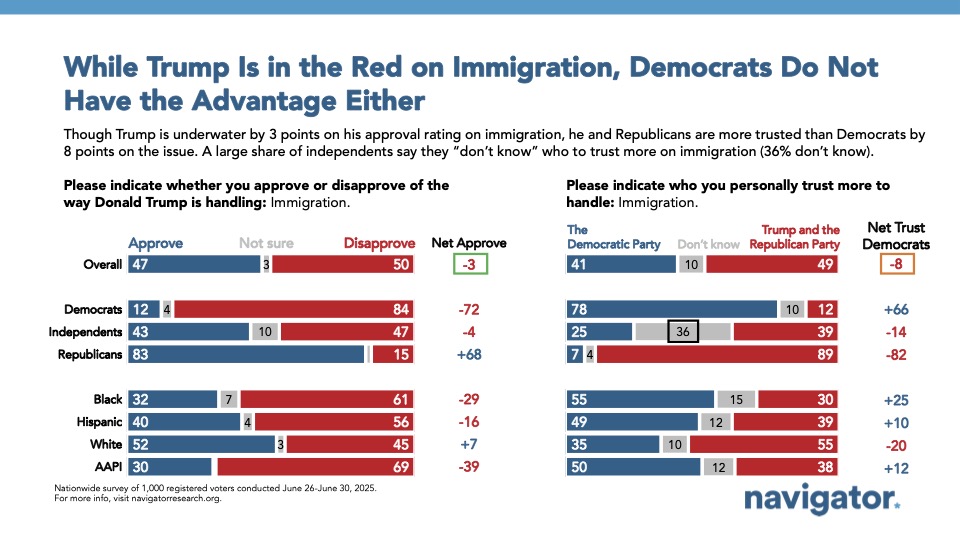
A majority of Americans across key demographics have heard about Trump’s plans for mass deportation raids—57 percent say they’ve heard “a lot,” and 82 percent say they’ve heard at least “some.” Far fewer, however, have heard about elected officials like Senator Padilla getting arrested for protesting Trump’s immigration policy (24 percent heard a lot 54 percent heard at least “some”).
Concern about the ICE raids is high, particularly among Americans of color: 40 percent of Americans say they are “very concerned” about Trump’s immigration raids—but that concern is closely tied to racial identity. While 46 percent of Black and Hispanic Americans are “very concerned,” only 37 percent of white Americans say the same. Some divergence here is expected, as white Americans in our sample tend to be more conservative, but the gap between white Americans and Americans of color is wider than usual. For comparison, on the question of Trump’s use of tariffs, white Americans are only three points behind Hispanic and AAPI Americans in the share who are “very concerned.”
We see a similar racial dynamic when it comes to Trump’s deployment of the National Guard to Los Angeles.
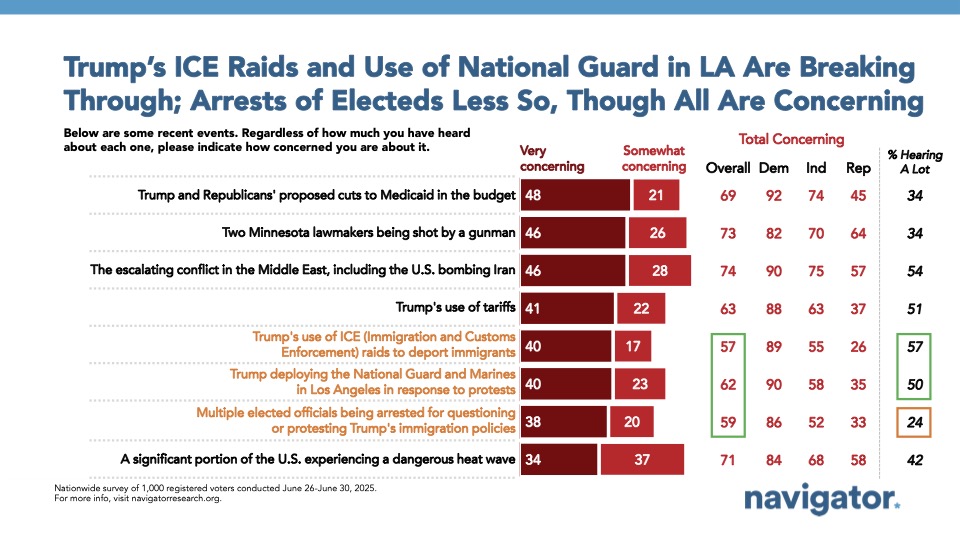
Support for Trump’s mass deportation plan closely mirrors his overall approval on immigration. 45 percent support the plan, while 49 percent oppose it. That’s a notable shift from just before his inauguration, when support for his proposed plan stood at 51 percent and opposition at 41 percent.
- Opposition has grown among both Democrats (from net -52 to net -62) and independents (from net even to net -10), but even more so among Black Americans (from net -4 to net -41), Hispanic Americans (from net -4 to net -19) and Asian American and Pacific Islanders (from net -11 to net -32).
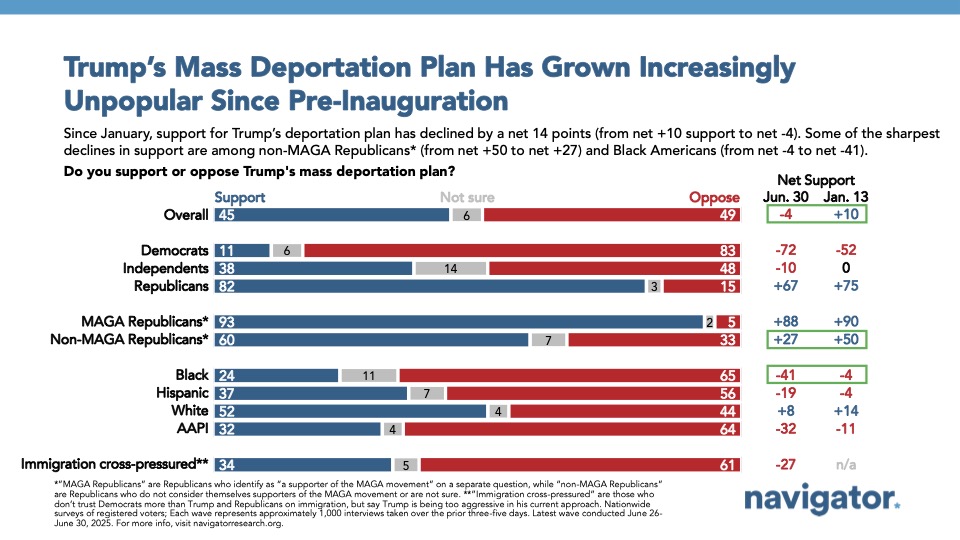
The backlash stems from perceptions that Trump’s approach is too aggressive. 52 percent of Americans—including 49 percent of independents—say he’s gone too far.
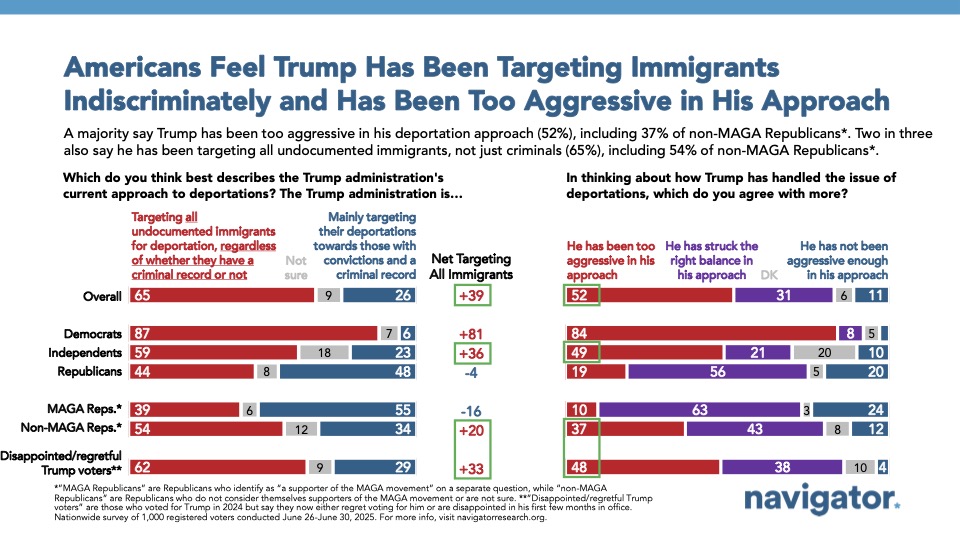
Nearly one in five Hispanic Americans (19 percent) know someone who has been detained by ICE—double the 9 percent rate across the full electorate. The generational divide is also stark: 12 percent of Gen Z and 16 percent of Millennials know someone who has been detained, compared to just 3 percent of Baby Boomers.
- Greater shares are worried about family and friends being targeted by ICE (20 percent) and people in their community being targeted by ICE (46 percent), particularly 39 percent of Hispanic Americans are worried about a family member or friend being targeted.
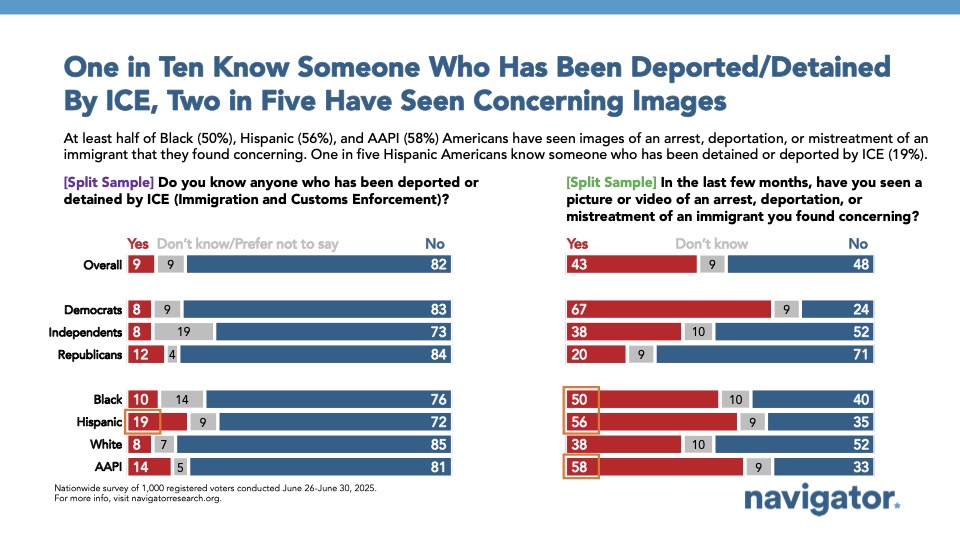
ICE raids as a tactic are broadly unpopular and not seen as the answer to concerns about immigration. We tested two messages: one focused on humanitarian concerns, saying the raids spread fear and chaos while targeting immigrants in inhumane ways; the other emphasized economic disruption, noting that the raids hurt farmworkers, restaurants, and local economies. Both messages significantly outperformed a pro-ICE raid message centered on law enforcement, national security, and deterrence. 51 percent agreed that the raids are creating economic chaos, and 49 percent agreed they’re inhumane—compared to just 40 percent who said the raids are necessary.
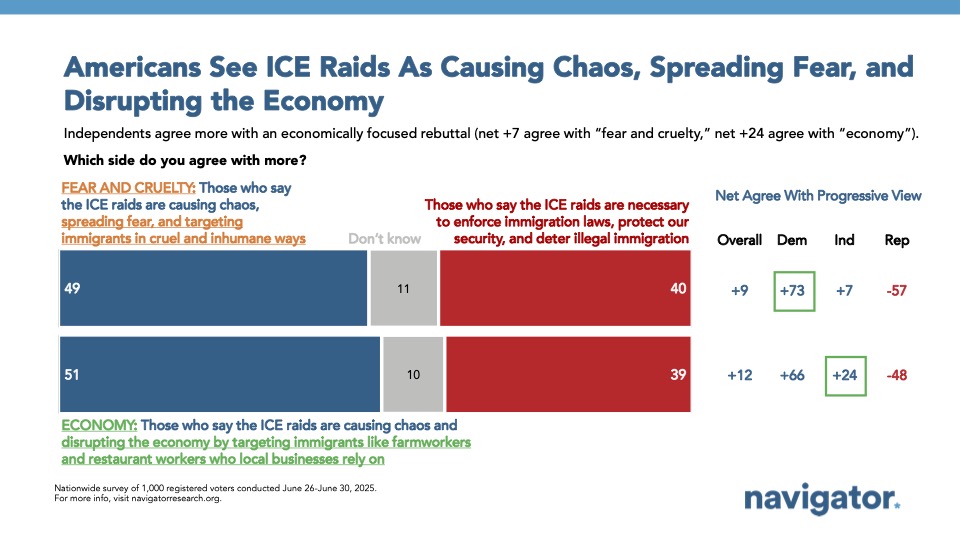
Americans want both control and compassion: they want to crack down on perceived crime, but they also want a path forward for people who have been in the country for years or are here to work and provide a better life for their families. That sentiment comes through most clearly in our policy battery. The single most popular proposal, supported by 78 percent of Americans, is to “focus deportation efforts on those who have been convicted of serious crimes.” That’s followed by a 76 percent favorable rating for “fix our broken immigration system to ensure there are safe, legal ways for people to immigrate into the U.S.” The phrase “broken system” remains a critical narrative frame, reinforcing the power of anti-status quo messaging. By contrast, the least popular idea we tested—favored by just 29 percent—is “deport all undocumented immigrants, even those with U.S. citizen family members or those who’ve lived here for more than a decade.”
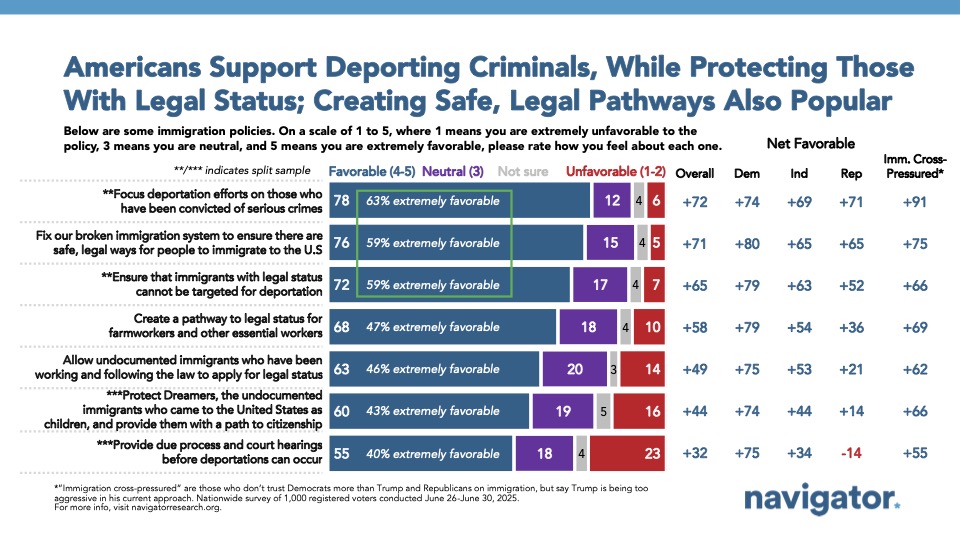
Message Test:
The hard-line anti-immigration message loses soundly to a more balanced, values-driven message.
Hard line message: “Focusing on strict enforcement and mass deportation by having ICE target all immigrants who are here illegally for deportation, with the goal of deporting millions of people each year, while investing in border security, detention centers, and increased enforcement to deter future illegal immigration.”
Balanced approach: “A balanced approach that focuses on deporting those who have committed serious crimes, while still upholding American values like treating people humanely and ensuring due process as protected in the Constitution. This approach would also allow immigrants who have been working, paying taxes, and following the law to apply for legal status.”
Balanced Approach wins 59 percent to 39 percent.
However, simply adding a reference to the broken immigration system boosts support even more—to 66 percent versus just 25 percent for the hard line message:
Broken system: “A balanced approach that fixes our broken immigration system by focusing on deporting those who have committed serious crimes, while still upholding American values like treating people humanely and ensuring due process as protected in the Constitution. This approach would also allow immigrants who have been working, paying taxes, and following the law to apply for legal status.”
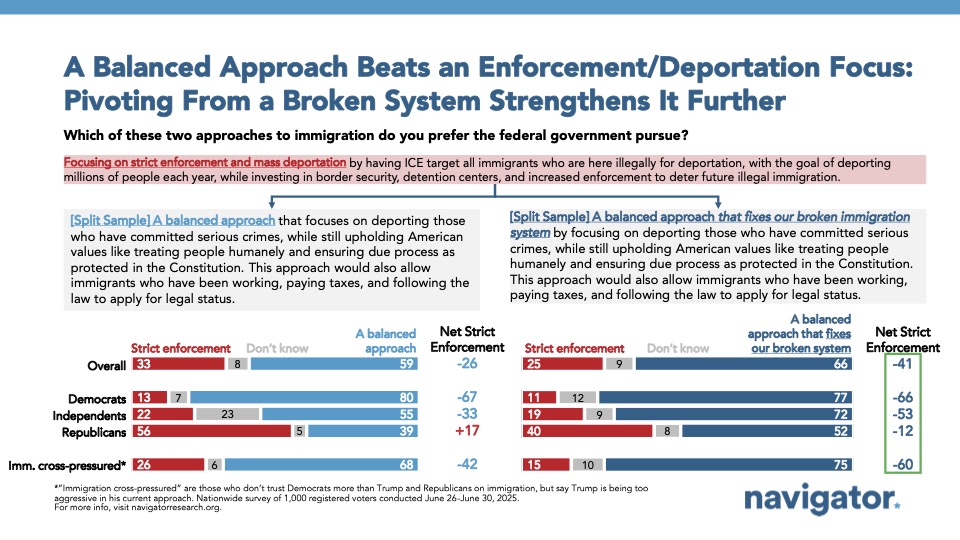
Americans are clearly looking for humanity and common sense on immigration, as well as an acknowledgement that the current system is broken. As Trump’s aggressive tactics become increasingly unpopular, messages like this can help shift perceptions of Democratic effectiveness on immigration.
About The Study
Global Strategy Group conducted a public opinion survey among a sample of 1,000 registered voters from June 26-June 30, 2025. 100 additional interviews were conducted among Hispanic voters. 75 additional interviews were conducted among Asian American and Pacific Islander voters. 100 additional interviews were conducted among African American voters. 100 additional interviews were conducted among independent voters. The survey was conducted online, recruiting respondents from an opt-in online panel vendor. Respondents were verified against a voter file and special care was taken to ensure the demographic composition of our sample matched that of the national registered voter population across a variety of demographic variables. The margin of error for the full sample at the 95 percent level of confidence is +/- 3.1 percentage points. The margin of error for subgroups varies and is higher.




